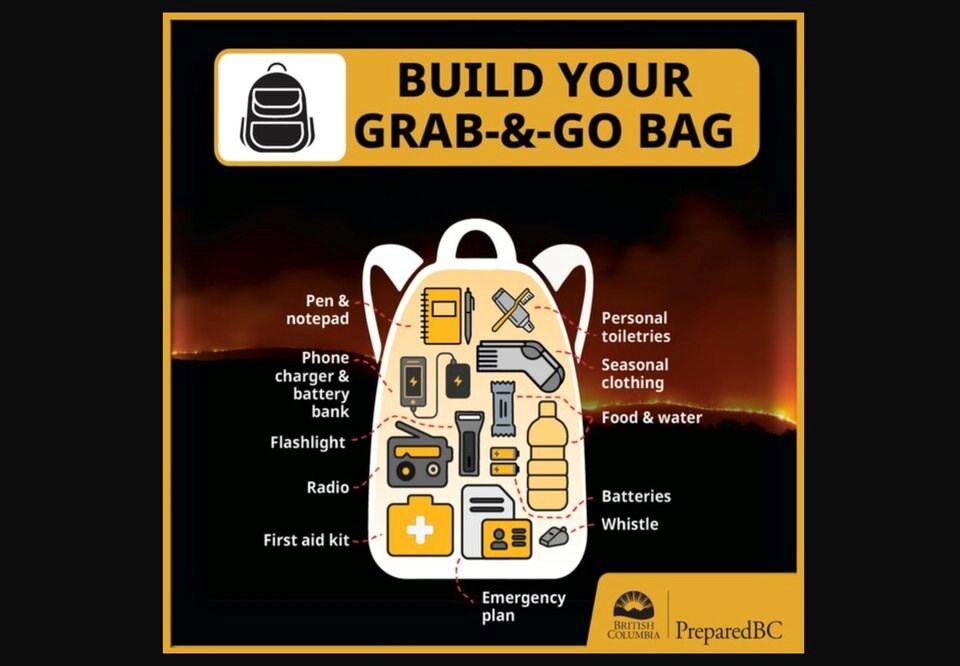With aggressive and extreme fire activity across much of B.C., residents are urged to prepare themselves, their property and their pets to leave at a moment's notice.
Even if they’re not under an evacuation alert.
Erick Thompson, Information Officer and Communications Supervisor with the Regional District of Okanagan Similkameen, said the FireSmart Emergency Wildfire Preparedness Kit is the best bet to use as a guide for a grab-and-go bag resource.
“But it's really what you think your family needs, and my recommendation for my family is to have at least a first aid kit as a base, you want to have that as a starter because it's got everything you need, whether you're out and somebody scrapes their knee, or you have a serious injury,” he added.
The next step is to grab another bag to pack blankets and a change of clothes.
“Even if it's warm out, you're always going to need blankets,” Thompson added.
A supply of water bottles and a reusable water bottle are the next thing to pack, followed by some high-protein granola bars or ready-to-eat snacks and some electrolyte packets.
“Then you want to look at things that you're going to need specific to your family. So whether it's reading glasses, your medication that you need, important paperwork like insurance, anything that can be invaluable if you have to leave your home on short notice,” Thompson said.
“When it comes to paperwork and your grab-and-go kit, you want to have anything available that you think you will need. If something happens to your home or if you're out of your home for a long time. That can include your insurance papers, important documents, such as passports or identification, a will, anything that you would want to have with you rather than in your home when you're going to be away for several days potentially.”
Additional suggestions include extra batteries, charging cables and a battery bank for phones, a flashlight, and cash in small bills.
Thompson said that having an emergency plan can at least help take away a little bit of the stress for residents who face evacuation.
BC Wildfire Service information officer Shaylee Sterns echoed that sentiment.
“In helping prepare in advance either when you're on evacuation alert or before that and taking that pre-emptive action can help make the experience less stressful. It's obviously a very stressful and intense situation if you're ever put on alert or order. But ensuring that you develop either that household plan or that emergency kit, or having those lines of communications with members of your community can help ensure that you have those proper plans in place before those situations arise,” she said.
The Kamloops Fire Centre area is covered by a majority of the wildland-urban interface, where wildland fuel comes into contact with the public or communities.
Recent weather systems have led to gusty winds, the potential for lightning and hot, dry conditions that may continue into Saturday before the system passes.
“We'll see that increase in activity on a lot of our fires, especially throughout the Kamloops Fire Centre as this system passes through. With the current conditions as well and the potential for dry lightning, it does leave fuels more susceptible to ignition.”
Helping fire crews by preparing yourself and your property is a major asset to a firefight.
“These situations are dynamic, and they evolve quite quickly, so it's always important for people just to have those already in place and to be prepared for that,” Sterns said.
“If someone knocks at your door and it's the RCMP, and they say you have to leave right now, right now means right now, because when people delay, especially if they delay by a long time, that can put fire crews at risk because they need to get in there and start doing the work that they need to do,” Thompson added.
For more information, visit the government’s emergency preparedness website here or the FireSmart website here.




